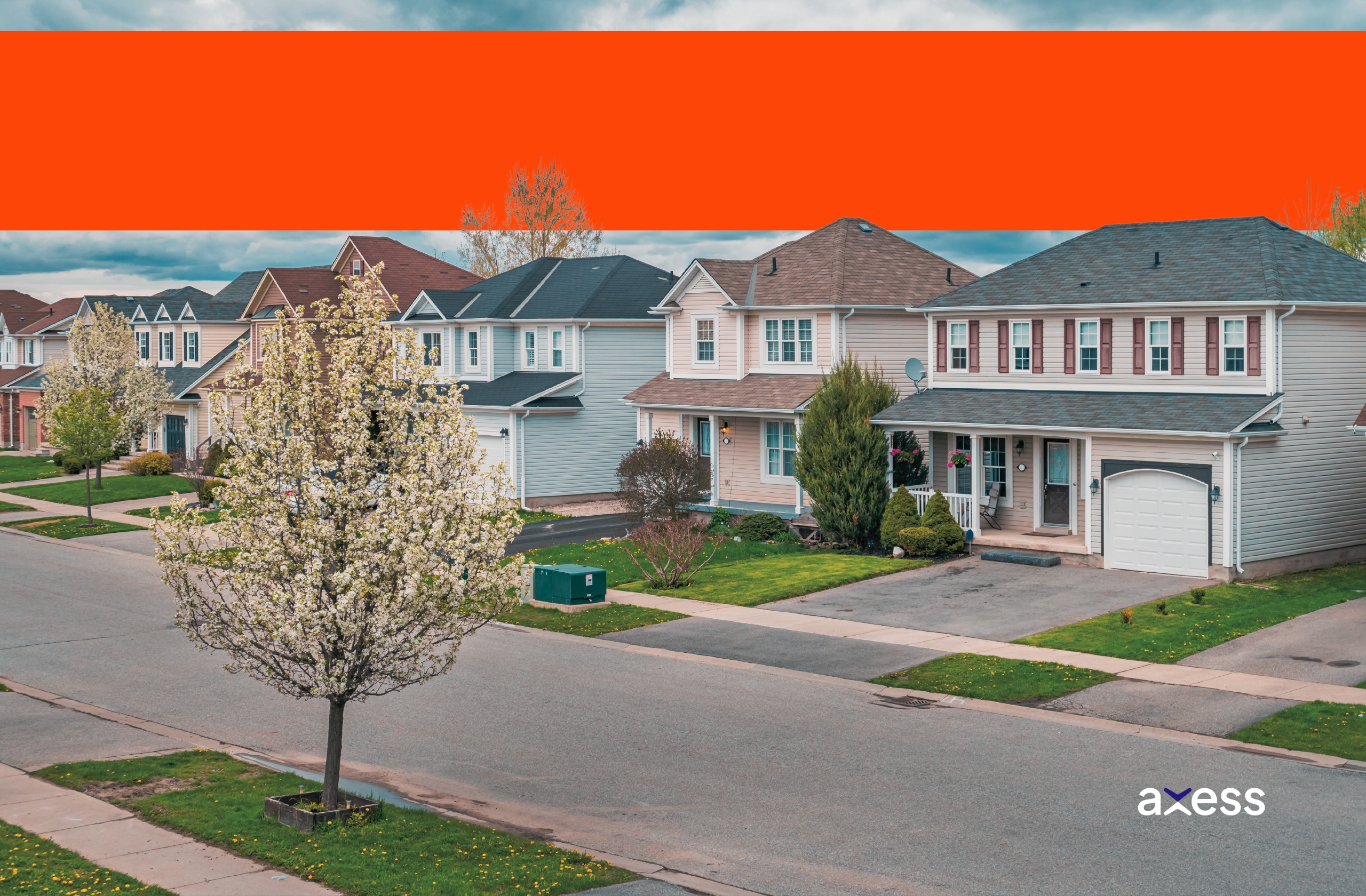Buying on High Water
Published on 27 December 2021, 02:21:23 PM
Buying on high water could put a serious, and dangerous, damper on your home owning ambitions.
As a 2018 Toronto incident demonstrates, high water can cause significant damage in a hurry, $80 million in just a few brief hours. When your property sits on a lost river or stream, buying on high water can be a double whammy to home insurance and property values.
You may not have grounds to sue anyone for the ensuing damages. That can mean lost profits for Greater Toronto Area property investors, and loss of priceless heirlooms, or even your life, if the home that floods is yours.
Axess Law’s real estate lawyers review your draft or signed agreement of purchase and sale before you close to ensure you’ve thought of everything, including not-so-obvious buying on high water hazards.

Ghosted by High Water
Ghost or ninja storms, extreme downpours that come out of nowhere, can overwhelm your home’s ability to hold back high water. On that sunny August 2018 day, basements flooded, sewage-clogged underpasses trapped a streetcar, and cars floated away in underground garages. They were victims of underground sewer lines that forged high water pathways along forgotten territory.
Hazards of flood zones and buying on high water.
Walking Among Ghosts
A fascinating glimpse of early Toronto is buried in a network of underground rivers and streams hiding in plain sight. What Geohistory-Géohistoire Canada has found by combing through maps and archives, talking to old timers, and walking their footprint are long-lost rivers and streams. The society’s historic geographical information system (HGIS) traces the location of Toronto’s high water hydrology.
Protecting your buyer’s right to cancel.
The lost creeks and rivers can be uncovered in virtual, online walks, or by taking a hike on Lost River Walks with the Toronto Green Community. The nonprofit, with partners like the Toronto Field Naturalists and Hike Ontario, has been wading through high water since 1995.
That’s important because HGIS and river walks can be used to uncover the natural history of an area to tell if you are buying on high water.
The High Water Mark Provision
Where water normally meets land is called the normal controlled high water mark. But a high water mark can be:
- an annual high from spring freshets, when snow and ice thaws
- the result of a one-time flood
- or the all-time high from an extreme storm.
How Do You Find the High Water Mark?
But you don’t need to leave home to do your research on a high water mark.
Home hunters worried about buying on high water can virtually locate rivers and streams pushed underground as the city grew. Online sites like The Lost Rivers of Toronto Apps Gallery or the University of Toronto Disappearing Rivers app on Geohistory-Géohistoire Canada’s webpage exist to aid in your quest.
They give you a bigger picture that simply viewing overland flooding or flood-prone areas at websites like CityFloodMap.com might not. That’s key to home purchases because insurers can use those tools to argue buying on high water justifies paying more for overland flooding or hidden high water coverage.
Mortgaging a lakeside lot in Ontario.
Looking at high risk neighbourhoods with a history of flooding in extreme weather gives you a sense of what you’re in for when a ghost or ninja storm strikes. Because the impacts can be restricted to a very small area, even a move of a few blocks over could make a difference to reducing insured losses to your home or condo.
Toronto Life (“Hell and High Water”, May 23, 2019) predicts those 100-year storms you keep hearing about could soon be 30- to 60-year events. And their severity? 15% to 35% greater.
Five Tips for Buying on High Water
So what can you do? Common sense prevails when it comes to keeping your property clear of high water.
- Declog foundation drains.
- Clean tree roots from sewers.
- Replace degraded weeping tile around your home.
- Invest in sump pumps or back-flow valves.
- Grade and slope your lot, if needed (get a city permit first).
- Keep an eye on the weather.
- Report incidents to the city in case street sewers need repairs.

Buying Waterfront in the Greater Toronto Area
Waterfront property can be a joy to come home to after a long day at work. (Even nicer if you are WFH, working from home.) But high water risks go up the closer you get to waterfronts, creeks, or rivers.
Fortunately, newer developments benefit from modern sewer infrastructure. Buying new construction, or pivoting to a recently developed subdivision, can pay dividends for investment property owners and home buyers.
What to look for when buying new construction.
While Toronto is taking steps like upgrading older sewer lines and diverting water (with a wet weather flow master plan, basement flooding protection, and Don Mouth naturalization project), flood insurance for basement drains is a must.
As for whether insurance is worth it for freshwater lake and “riverine” flooding, definitely. You wouldn’t want neighbours suing you for backed-up sludge and dirty water in their basements if your drains fail in extreme wet weather.
Flood vs Overland Flooding Insurance
How do you know what kind of home insurance you need? Location, location, location is a clue.
Flood insurance covers basement drain events. Overland (freshwater) flood insurance could reimburse you if bad weather overwhelms your home by overtopping doors, or bursting through windows.
Why to buy fire and flood insurance for your home.
What you get with most freshwater flood insurance policies is coverage for:
- interior and exterior damage from overflows — mould, new drywall or floors, replacements to electronics, furniture, and belongings
- sewer backup coverage
- and personal property losses.
What’s not covered under overland flooding policies are:
- saltwater intrusion, such as from tsunamis, King tides, or tidal waves from high winds
- losses from burst pipes, although repairing or replacing pipes can be insured
- sewer backups, covered under separate insurance
- or espionage, such as deliberate damage to a dam that floods your home or property.
What hiring a real estate lawyer can do for you.

Why You Need a Real Estate Lawyer
Axess Law advises home buyers to check with insurers before you invest in property at potential risk. Insurance policies in flood prone areas can have low caps or limits that leave you paying the balance from your own pocket.
Always ask realtors for risk assessments or property damage histories. They may not know, but asking for a SPIS (seller property information sheet) at least puts whatever the current owner is prepared to divulge in writing.
A word of caution: the SPIS isn’t mandatory.
Our virtual real estate lawyers in Ottawa and Greater Toronto Area can do document searches, and title to your new land or home with local land registry offices. You can access our lawyers anywhere you are, without leaving your home or office.
Affordable Real Estate Lawyers, Anywhere You Are
Access lawyers for less in Greater Toronto Area, Ottawa, or anywhere in Ontario when you buy, sell, or transfer property. Axess Law’s flat fee real estate lawyers are affordable, and our rates are all inclusive (excluding taxes, disbursements, and third-party charges). Axess Law offers you only the legal services you absolutely need. Your final invoice includes no surprises or hidden charges. Your itemized statement of adjustments is explained when we deliver it, and we answer any questions you have about it.
Book Remote or In Person Appointments
Book appointments easily with our online form or by phone to our 647-479-0118 lawyer line, toll free at 1-877-402-4207. Axess Law real estate law offices video conference online or meet in person when conditions allow. Enjoy onsite parking or easy transit access.





